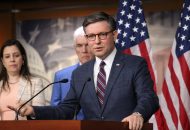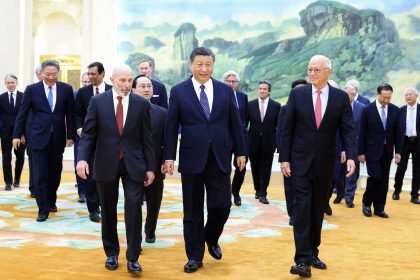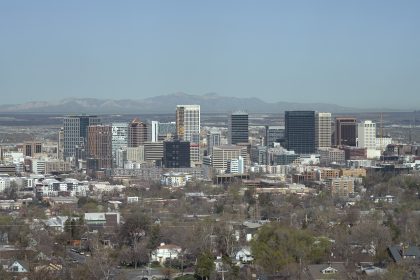You Can’t Make Policy for What You Can’t See
COMMENTARY

As a lifelong Los Angeles Rams fan, I find it heartening that at the end of every football season the NFL analyzes its reams of data to evaluate rule changes for the coming year. This includes how kickoffs work, the structure for overtime and even modifications to the two-point conversion rules. The league’s leadership understands that they can no longer make decisions based on gut instinct, but instead need to use the vast amount of data available to bring light to the hard issues facing the game.
Policymakers would be wise to turbocharge the adoption of this data-driven approach too.
The truth is that you can’t make policy for what you can’t see, and for far too long, many of our leaders have been making decisions based on what feels right rather than a rigorous analysis of the data available.
The good news is that in many policy areas, data is becoming available where it was once hard to find — both from the public and private sectors.
When I served as chief of staff of the U.S. Department of Commerce in the Obama administration for Secretary Penny Pritzker, we launched an open data initiative to help leaders and the private sector better solve problems and improve decision-making. We essentially viewed our massive data sets as inventory on a shelf that could be reused if we could unlock it to better share it with entrepreneurs, businesses and the public.
I am very proud that this data project has fueled innovation in the public sector, particularly when it comes to leveraging National Oceanic and Atmospheric Administration data to support cutting-edge approaches to how we measure climate, weather and giving more time to plan for ever more destructive storms. For example, those weather apps we all use would not exist without creating enhanced access to reams of government data.
Meanwhile, when it comes to policy related to microbusinesses (generally defined as businesses with 10 or fewer employees), a great example of using data for good comes from GoDaddy, which has developed a unique dataset that shines a light on the impact everyday entrepreneurs have on the communities in which they operate, down to the ZIP code level.
This work includes everything from how microbusinesses affect income and jobs to identifying the reasons why these entrepreneurs start their businesses in the first place. Policymakers in a growing number of cities including Boise, Idaho, Chicago, Illinois, Las Vegas, Nevada, and Gilbert, Arizona, are using this data to see how they can boost economic development and resiliency in their cities. And recently, the company launched its data hub that makes its data publicly available and free of charge.
The good news is this is just the tip of the iceberg. Government and private sector companies are doing more every day to bring data to bear on important questions and challenges. Steve Ballmer, for instance, has launched USAFacts to serve as a repository for all the government data that is publicly available. And Zillow is leading a new cohort of innovative companies by making its data on home listings and sales public to help people better understand the housing market.
The stark reality is that our nation has big issues to address — from climate change to gun violence to water quality to how to grow our economy and create more opportunity at a time when the cost of living is on the rise.
These issues are complex. Gut instinct isn’t enough. The more we bring data to bear on these challenges, the easier it will be to develop solutions, and the better the decision-making will be.
The policy world should double down on the important efforts they’ve made so far and follow the lead of the NFL — to fully leverage data to identify and solve the toughest problems around.
Jim Hock was the chief of staff to Commerce Secretary Penny Pritzker in the Obama administration. He currently serves as senior vice president, External Affairs, PSP Partners. You can reach him by email here.























